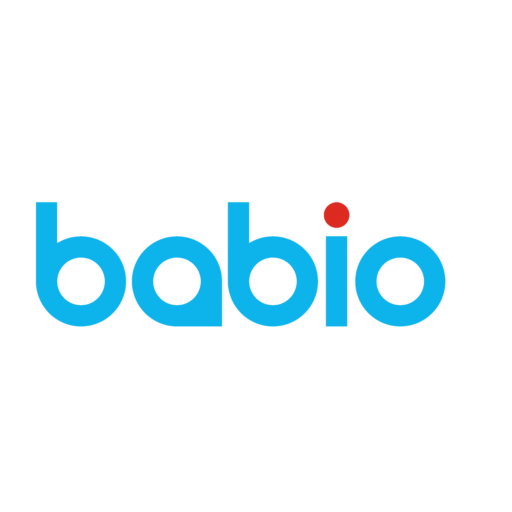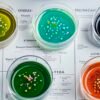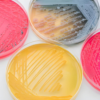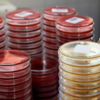
food hygiene detection is critical in ensuring the safety and quality of food products, especially in industries where contamination can have serious health implications. Effective microbial detection is key to maintaining hygiene standards, and Babio’s chromogenic media provides an advanced solution for accurate and rapid pathogen identification. This article explains the benefits of using Babio’s chromogenic media for food hygiene, including its unique features, range of applications, and guidance on selecting the right media for different testing needs.
Table of Contents
- Introduction to Chromogenic Media
- The Advantages of Chromogenic Media in Food Hygiene
- Key Features of Babio Chromogenic Media
- Top Babio Chromogenic Media for Food Hygiene Detection
- 1. Babio Salmonella Chromogenic Media
- 2. Babio E. coli/Coliform Chromogenic Media
- 3. Babio Listeria Chromogenic Media
- 4. Babio Staphylococcus Chromogenic Media
- How to Select the Best Chromogenic Media for Your Food Safety Needs
- Conclusion
1. Introduction to Chromogenic Media
Chromogenic media represent a revolutionary approach in microbiology. By incorporating chromogenic substrates that release colored compounds when metabolized by specific microbes, these media allow for simple, visual identification of pathogens. Babio’s chromogenic media are developed specifically to enhance food hygiene testing, providing accurate results in less time than traditional methods.
2. The Advantages of Chromogenic Media in Food Hygiene
Babio’s chromogenic media offer several significant benefits:
- Rapid Identification: Chromogenic media allow for direct identification of target microorganisms, often without the need for confirmatory biochemical tests, speeding up the testing process.
- Improved Accuracy: With selective components, Babio’s media are formulated to target specific pathogens, reducing false positives and ensuring reliable results.
- Ease of Use: The distinct color reactions simplify identification, making it easy for users to interpret results even without extensive microbiological training.
These advantages make Babio’s chromogenic media a preferred choice for food testing laboratories, where accuracy and efficiency are paramount.
3. Key Features of Babio Chromogenic Media
When using Babio’s chromogenic media, you can expect:
- Distinct Color Differentiation: Each pathogen type produces a specific color, making identification intuitive and eliminating guesswork.
- High Sensitivity and Specificity: Babio’s media are formulated to reduce interference from non-target organisms, enhancing the clarity and reliability of results.
- Selective Components: Our media contain specific inhibitors to prevent the growth of competing organisms, ensuring that only target pathogens are detected.
- Time Efficiency: With clear visual differentiation, Babio’s chromogenic media reduce the need for extended incubation times or additional tests, saving valuable time in the food safety workflow.
4. Top Babio Chromogenic Media for Food Hygiene Detection
Babio offers a range of chromogenic media tailored to detect various foodborne pathogens. Here’s a look at our top solutions:
1. Babio Salmonella Chromogenic Media
Overview: Babio Salmonella Chromogenic Media is designed to identify Salmonella species in food samples. The medium is selective for Salmonella and produces distinctive color changes that make identification straightforward.
- Applications: Ideal for testing meat, poultry, eggs, and processed foods where Salmonella contamination is a concern.
- Features:
- Produces a unique color change for Salmonella colonies, allowing for quick identification.
- Contains selective agents to inhibit non-Salmonella bacteria.
- Benefits: Babio Salmonella Chromogenic Media enhances testing efficiency by enabling direct colony visualization, making it easy to identify Salmonella without further testing.
2. Babio E. coli/Coliform Chromogenic Media
Overview: This medium is formulated for the simultaneous detection of E. coli and other coliform bacteria, which are key indicators of contamination in food and water.
- Applications: Useful in a wide range of food types, including dairy, water, and produce, where coliform presence can signal hygiene issues.
- Features:
- E. coli colonies are easily distinguished by a specific color, while other coliforms produce a contrasting color.
- Optimized for high sensitivity to detect low levels of contamination.
- Benefits: With Babio’s E. coli/Coliform Chromogenic Media, labs can quickly detect contamination sources and take necessary actions to prevent foodborne illness.
3. Babio Listeria Chromogenic Media
Overview: This medium is developed for detecting Listeria monocytogenes, a pathogen that poses a significant risk in ready-to-eat and refrigerated foods.
- Applications: Perfect for dairy products, ready-to-eat foods, and processed meats where Listeria contamination needs to be monitored.
- Features:
- Produces distinct colors for Listeria monocytogenes colonies, facilitating quick identification.
- Selective agents prevent the growth of non-Listeria organisms, ensuring result accuracy.
- Benefits: Babio Listeria Chromogenic Media offers an efficient and highly accurate solution, allowing food safety professionals to detect Listeria contamination quickly.
4. Babio Staphylococcus Chromogenic Media
Overview: Designed to detect Staphylococcus aureus, this medium is essential in environments where staphylococcal contamination can pose a risk, such as in dairy, meat, and bakery products.
- Applications: Particularly suited for dairy, processed meats, and baked goods.
- Features:
- Distinctive color differentiation for Staphylococcus aureus colonies makes identification straightforward.
- Inhibitory agents restrict non-target organisms, ensuring precise results.
- Benefits: Babio Staphylococcus Chromogenic Media enables quick detection of Staphylococcus aureus, helping manufacturers uphold hygiene standards in food production.
5. How to Select the Best Chromogenic Media for Your Food Safety Needs
Choosing the right Babio chromogenic media for your food safety testing requirements depends on various factors:
- Target Pathogens: Identify which pathogens are most relevant to your product type. For example, Salmonella and E. coli are typically monitored in poultry and meats, while Listeria is crucial in dairy and ready-to-eat foods.
- Testing Speed: For fast-paced environments, media with rapid color differentiation are essential to streamline the testing process and get timely results.
- User Expertise: Babio’s media are designed for intuitive interpretation, even by users with minimal microbiology training, making them suitable for diverse testing settings.
- Cost and Efficiency: Babio offers high-quality chromogenic media with clear color differentiation, ensuring efficient testing without compromising accuracy.
6. Conclusion
Babio’s chromogenic media offer a highly effective solution for food hygiene testing, combining speed, accuracy, and ease of use. From detecting common pathogens like Salmonella and E. coli to more specialized applications for Listeria and Staphylococcus aureus, Babio’s media are designed to meet the stringent demands of the food industry. By selecting the appropriate Babio chromogenic media for your testing needs, food manufacturers can ensure the highest hygiene standards, safeguard public health, and enhance product quality. visit our [Chromogenic Medium Series] for more related products
Recent Posts
- A Guide to Using Culture Media for Strict European Cosmetic Safety Compliance
- The Role of Culture Media in Ensuring Accurate Cosmetic Microbial Testing
- Transport Media and Their Role in Microbial Sample Transport
- How Culture Media Impact the Precision of Cosmetic Microbial Testing
- Optimize Lab Efficiency with Granular Culture Media



